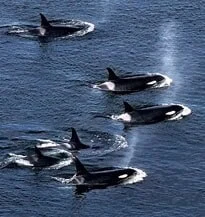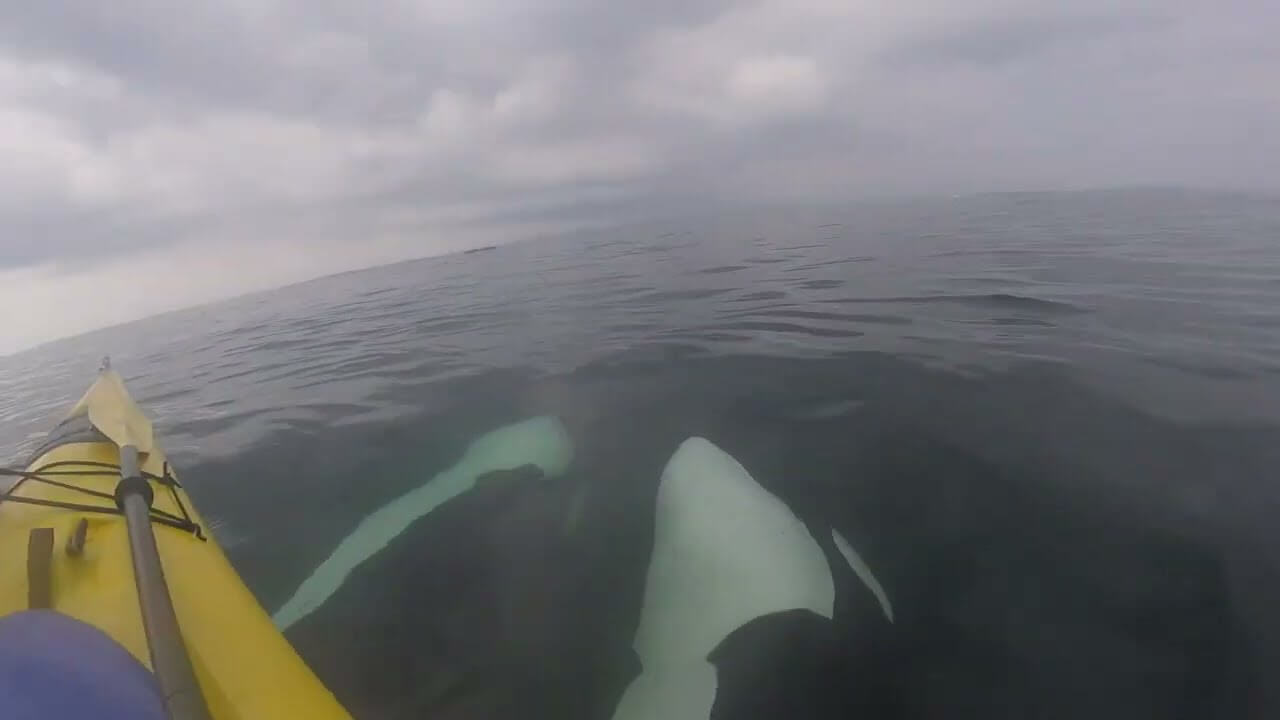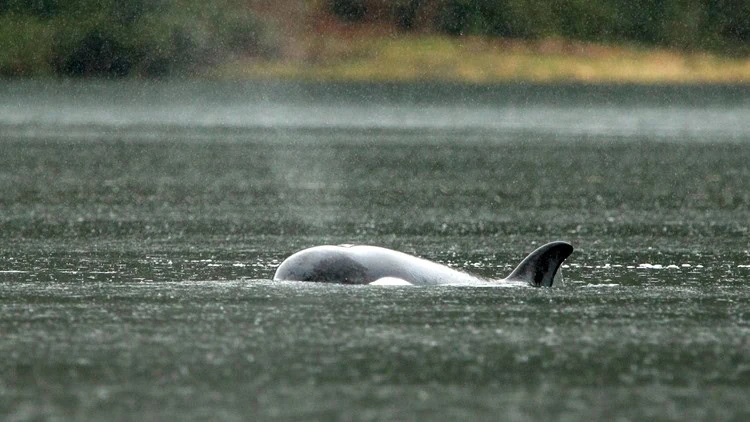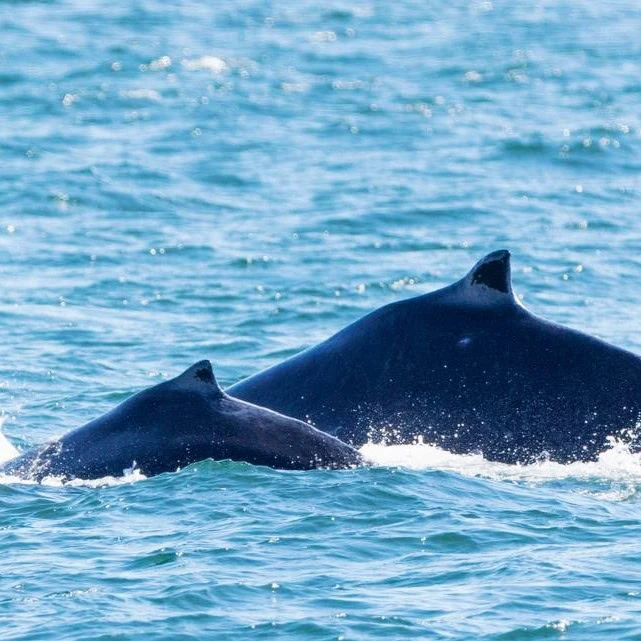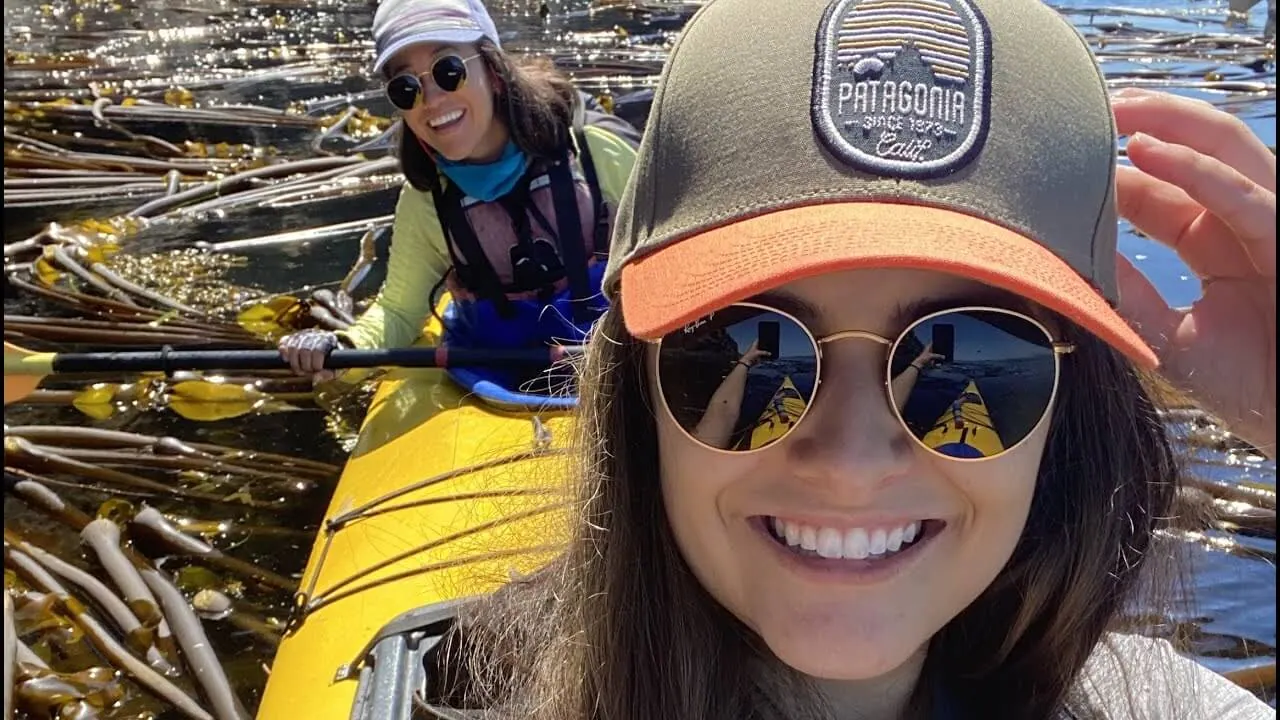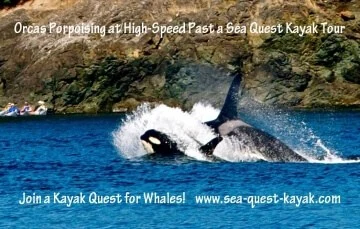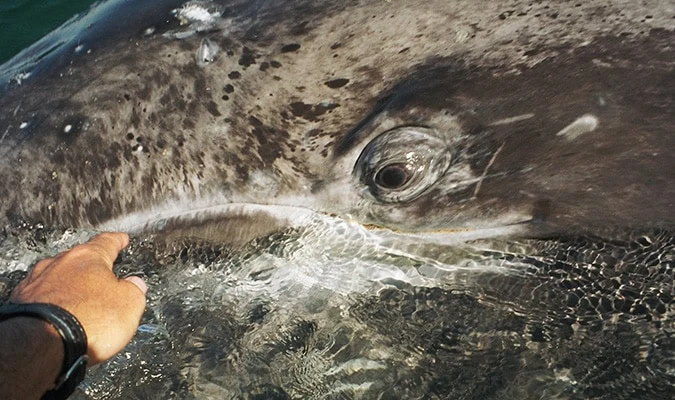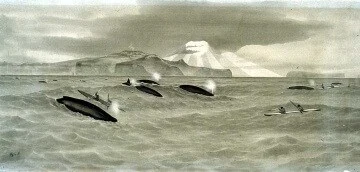We are enjoying an excellent summer for whale-watching kayak tours in the San Juan Islands. We set a record for the most 80 degree days ever and orca whales have been very active – the perfect blend for Sea Quest guests! All three pods of the salmon-eating orca have been putting on consistent shows as they travel and hunt fish along our kayak route in the Salish Sea of Washington. The orcas, also known as killer whales, have been entertaining our San Juan Island kayak tours all summer, showing off their power with beautiful breaches and playful tail-slaps on the water. Everyone loves seeing the orca calves, swimming by their mothers’ side, eager to get a peek at life above water. We are very encouraged to welcome four new orca calves to the San Juan Islands this year. Our threatened local clan has endured significant declines in recent decades and every birth is vitally important. J-pod’s three new calves and L-pod’s single calf will be added to the official role after they reach their first birthday this winter, bringing it up to 84 whales. The calf most recently born is J52, first seen midday on March 30, 2015 with fetal folds, indicating it was just a few days old. The newborn calves are just as curious as our own human newborns and love to jump and play with the members of their pod. Remarkably, two of the calves were born to mothers less than 10 years old, and one was born to a mom aged 43 years, extending the known ages for orca whale reproduction. Females usually become reproductively mature at 15 years of age and give birth to 3-5 calves in their lifetime. First-time killer whale mothers have a rough time. They need a lot of support from the calf’s grandmother and aunts to overcome their inexperience. Half of the newborns die in their first year leaving many bereaved mothers. We suspect that calf mortality is much higher now than it was in the past. All creatures on the planet today, but especially predators, suffer from the cocktail of toxic chemicals and heavy metals that we humans have haphazardly released into the environment. In a process called bioaccumulation, these toxins build up to higher concentrations during each step up in the food chain. Each step magnifies the poisons by a factor of 10 so by the time they reach orca whales the quantities are astounding and frightful. Legally, if one of our orca whales died and washed up on a local beach, it would have to be transported to a toxic waste facility for disposal! What a sad indictment on our species. Polychlorinated biphenyls, more commonly known as PCBs, were heavily used in electrical transformers, oil, paints, adhesives, and cement for decades until they were banned in 1977. These chemicals are some of the most toxic that humans have invented and are known to compromise immune systems, cause cancer, and mimic hormones that make fetal and infant development go haywire. To make matters worse, these poisons bind to animal fats and organs. As PCBs require thousands of years to degrade, their legacy will be with us far into the future. Worse still, other toxins are being added, such as PBDEs, a group of fire retardants added for decades to most products before it was realized that they, too, are deadly to humans and wildlife. Although they have been banned in Europe, PBDEs have yet to be completely outlawed in the United States. There is no way we can remove these toxins from our whales or other marine creatures. But female mammals, including humans, do have a method of excreting about half of these poisons. Unfortunately, they do it by producing milk that is fed to their young. Human infants and orca calves all receive a nasty dose of toxic chemicals via breast milk. Numerous studies show the harmful effects on the development of humans and other mammals and more will be released soon. The orcas get a much worse dose given that their mothers carry the highest loads of PCBs ever detected in a living creature. This certainly contributes greatly to the high mortality we see in their calves and threatens the future survival in our region. Each time that a female orca gives birth, the amount of PCBs left in her fatty tissue is lower and the amount transferred into her milk decreases. Each successive calf has a greater chance of surviving, making the older reproductive females more valuable to their community. As a side note, some biologists believe that post-menopausal grandmother orcas sometimes nurse related calves, adding to their valuable contribution of care. We currently have 81 whales surviving in our unique community of salmon-eating orcas. Because the males cannot offload toxins like the females, their overall life expectancy has plummeted to half of what it once was. Life expectancy for a male is now only 40 to 50 years compared to the female’s 70-100+. There are few things more magical than kayaking in the beautiful waters of the San Juan Islands and seeing one of these incredibly social and intelligent mammals roll belly up next to your kayak and look you in the eye. Of course, this doesn’t happen on all of our kayak tours, but we do have many orca encounters through the whale watching season – many of them up close and personal! But who knows for how much longer we can enjoy this magnificent predator in our midst? To continue enjoying killer whales on our sea kayaking trips, it is absolutely necessary we take greater care with our wastes and increase testing of new chemicals before they are widely used. Join a Kayak Quest for Whales from Friday Harbor, Washington

